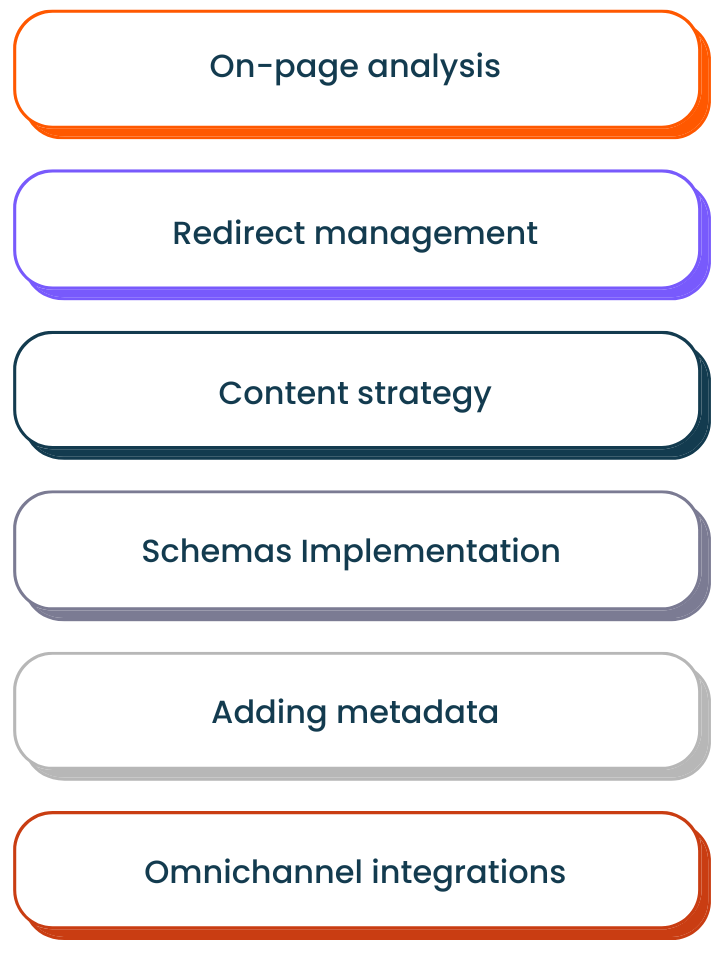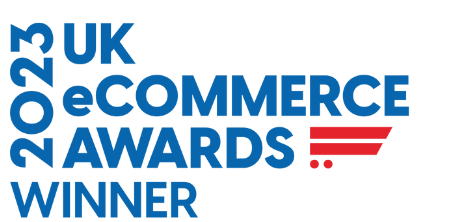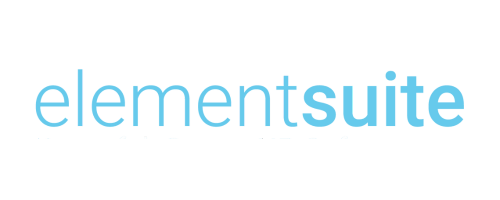"We started working with Growthack around 18 months ago and Our work together has been about so much more than just B2B SEO – it was about truly understanding our buyers and bringing our brand to life in a way that resonated with them. By mapping out key personas and creating a content strategy that spoke directly to our audience’s needs, we transformed our website into a vehicle for growth. The results speak for themselves: a significant increase in qualified leads, stronger brand authority in the enterprise HR space, and a website that actively supports our growth ambitions."
We proudly work with
Victoria, elementsuite (acquired by Zellis)
"Kevin has been excellent, auditing our site he managed to spot opportunities to increase both our search presence and our conversion rate. I am a marketing specialist so can really appreciate his expertise is over and above my own, following an initial audit phase we are now going to continue to work with him regularly given the results we've already seen after only a month."
Joe, The Brick Tile Company
"The Growthack team bring expertise, dedication and professionalism to their work. They communicate with us regularly so that we can share and work together on the achievement of our commercial goals. We receive regular, detailed reports that allow us to assess progress and discuss continuous improvement. The results they have achieved for us are significant, with improved rankings, web traffic and engagement with our content. They are B2B experts who bring sensible, achievable solutions that mean that this essential part of promotional success is working hard and is aligned with our other marketing communications activity."
Kelvin, Echion Technologies
"Fantastic SEO agency! We’ve been working with Growthack for a few months now and we’ve seen some fantastic results already. Really knowledgable and always challenging us with new ways of thinking and ideas"
Jade Warwick, Shakespeare Martineau
"I have worked with Growthack for just over a year now, utilising their expertise, advice and management of our SEO and PPC channels. They are a real pleasure to work with, clearly experts in their field and have had an enormous impact on the quality and volume of traffic to our SaaS product."
Nicholas, Global Fintech SaaS Company
Leading professional services firm takes a local approach to national acquisition
Get Started Read MoreOur SEO audit service leads to real business growth
Maybe you already have an amazing website, but there’s always room for improvement to stand out from the competition. It takes a strategic approach to identify these opportunities, rather than just ticking items off a checklist. We always create customised plans for our clients, whether they’re new or existing.
In-depth analysis
Assess content and technical aspects to find possibilities for optimisation without neglecting any key information.
Prioritise critical issues
In order to achieve meaningful results within SEO performance, we prioritise resolving major obstacles first.
Identify growth opportunities
Not only do we identify issues, but we also make recommendations, offer guidance, and put together plans.

Have an SEO specialist audit your website
We deliver laser-focused SEO audits and go beyond the checklist approach by prioritising high-impact improvements, unearthing hidden opportunities, and meticulously analysing each facet of your website’s health.
The result? A realistic plan aimed to catch up with competitors in the areas that matter most to your business.
What is included in an SEO audit?
A multi-faceted SEO audit covers both technical and content-driven elements. Technical assessments analyse code, site architecture, hosting, and other back-end factors that impact crawlability and indexability. Content audits, on the other hand, evaluate information value, keyword targeting, multimedia integration, and user engagement metrics.
Crawl diagnostic
Crawlers mimic search bots to map out the site’s architecture and expose any crawl errors, URL duplicates, or other technical issues preventing pages from being indexed.
Page speed analysis
Load times are measured to identify bottlenecks like unoptimised images, render-blocking scripts, poor server response times, etc. Slow pages hurt UX and rankings.
UX overview
With over half of web traffic now mobile, ensuring flawless experiences across devices is crucial for user experience and improving visibility.
Schema implementation
Tapping into structured data, the audit evaluates rich markup opportunities to enhance click-through rates from SERPs.
Toxic backlink profiling
We’ll try to understand if any bad practices have taken place and ensure any low-quality or unnatural inbound links that may trigger penalties are flagged.
Conversion tracking integration
Audits assess whether analytics, event tracking, and conversion goals are properly configured to measure SEO impact.
How SEO audits identify opportunities?
Beside disclosing weaknesses and vulnerabilities, an SEO audit reveal valuable areas of potential. Their multifaceted analysis displays opportunities across:
Technical recommendations
Improving site speed and core web vitals. Optimising interstitials, mobile experiences, multilingual/international implementations, migration planning, and UX best practices adoption.
Content expansion
Mapping out topical gaps to target for new content production. Applying keyword research to identify high-opportunity queries. Upweighting content types/media that measurably over-perform.
Link gaps
Pursuing guest posting, public relations, blogger engagement, and digital PR campaigns. Systematically reclaiming unlinked brand mentions and citations.
Platform migrations
Evaluating modernisation paths to adopt the latest hosting infrastructure, CMSs e.g (WordPress, Shopify, Squarespace) website personalisation engines, and other cutting-edge marketing technologies.
Search journey optimisation
Improving the full searcher’s experience through stronger content quality, CTR impact from SERP features, and conversion rate optimisation.
Competitive leapfrogging
Dissecting what’s fueling rival performance locally, nationally or internationally – and developing strategies to outmanoeuvre their approaches.
Multi-channel integration
Aligning SEO tactics with paid marketing such as search, social, google shopping, remarketing and other digital channels for cumulative audience capture and conversion lift.
How long does an SEO site audit take?
The duration depends on multiple variables like your site’s size, complexity, audit quality and available resources. Basic technical audits for small sites could potentially be completed within a couple of days by our experienced SEO.
But for enterprise-level properties with vast codebases, multiple domains/languages, and robust custom implementations may take several days or even weeks.
6 key factors that impact timelines.
- Site size – The sheer number of pages, sitemaps, templates, and other components to audit linearly increases workload.
- Content volume – More copy, media, products, etc. lengthens the content quality/keyword alignment assessment phase.
- Technical debt – Excessive SEO issues and development bottlenecks slow down remediation roadmap planning.
- Link profile footprint – Analysing millions of inbound links from an aged domain takes far more effort.
- Competitive complexity – Intricate multi-national SEO battlegrounds require deeper strategy articulation.
- Data archaeology requirements – If historical analytics data or prior SEO work went undocumented, extra due diligence is needed.
For optimal results, the scope should align audit depth, schedule, and budget – then allocate sufficient resources to execute thoroughly without cutting corners.
Does my website need an SEO audit?
Well, SEO audits are an indispensable part of any website’s growth strategy, regardless of size or industry. Even recently launched sites can benefit from an audit to validate their architecture meets search engine guidelines from day one.
7 scenarios where an SEO audit is absolutely critical.
- Stagnant or declining rankings/traffic
If your website struggles to gain traction in organic search, an audit diagnoses root causes like technical debt or content relevance issues. Implementing its recommendations can recapture lost visibility.
- Site relaunch or migration
Audits ensure no SEO value is lost during a re-platforming or site migration. They catch common issues like redirect errors, indexing delays, or content pruning that can sabotage existing rankings.
- Competitive SEO shifts
When competitors make aggressive SEO moves, audits equip you to counter and leapfrog their tactics – protecting market share.
- Revenue model or strategy pivots
As your business evolves, SEO needs shift. Audits realign technical and content optimisations to favour new priorities.
- Merger/acquisition activity
During M&A transitions, audits synchronise domain strategy, resolve duplicate content issues, and safeguard equity.
- Cleaning up SEO debt
If sketchy SEO were involved historically, an audit root out any risky black hat tactics courting penalties.
- Establishing performance baselines
By auditing first, you have a benchmark to measure progress from future SEO initiatives against.
Even if your SEO seems healthy, regular audits uncover hidden opportunities eclipsed by tunnel vision – keeping your website dynamic and competitive.
Improve the quality of your website with an SEO audit
Get Started
11 most common issues found in SEO audits
Here are 11 of the most common (and impactful) trouble areas frequently uncovered.
1. Slow page load times
Page speed is a critical ranking factor that directly impacts user experience. Slow load times lead to higher bounce rates and lost conversions. Common culprits include:
Unoptimised images
Large, uncompressed image files force browsers to consume excessive bandwidth, delaying load times. Enabling compression, sizing images properly, and serving responsive versions are critical.
Render-blocking resources
JavaScript and CSS files that delay content paint can impact key speed metrics like First Contentful Paint and Largest Contentful Paint. Minifying these assets and deferring non-critical resources is recommended.
Excessive DOM elements
“Bloated” HTML and inefficient JavaScript payloads tax browser processing capacity. Auditing third-party scripts, refactoring top-heavy templates, and leveraging Web Components can streamline page rendering.
Poor server performance
Insufficient CDN provisioning, legacy hosting hardware, inefficient database queries, etc. can bottleneck server-side processing. Load testing and provision monitoring are crucial.
2. Weak content
As search engines prioritise high-quality content that comprehensively meets user needs, pages lacking substance and expertise get deprioritised. Weak content exhibits issues like:
Thin content
Superficial, reused, or low-value-added content absent true subject matter expertise. This provides a subpar experience compared to authoritative sources.
Mismatched keyword targeting
Failing to naturally map on-page content to align with searcher intent and demand. This creates a disconnect between what users expect and what’s delivered.
Engagement deficiencies
Shortages of multimedia, smart internal linking, jump links, and other engagement elements that extend dwell time on a page. This sabotages content’s ability to satisfy intent.
Relevance gaps
Topics/angles that are misaligned or incomplete compared to the holistic information landscape required to comprehensively cover a subject area.
3. Duplicate content
When identical or considerably overlapping content exists across multiple pages or sites, it creates duplicate content issues. Search engines struggle to determine the authoritative version, diluting visibility. Common causes include:
URL parametrisation
Session IDs, faceted navigation filters, tracking parameters, print-friendly versions, and other URL variations can spawn duplicate content instances across URLs.
Content syndication
Republishing the same copy across domains without employing proper canonical signals and redirects. Scraper sites and affiliates can proliferate this issue.
Inefficient templating
Outputting boilerplate text like product descriptions, location details, or other universal content duplicated verbatim across pages rather than dynamically rendered.
Migration/re-platforming errors
URL mapping and redirection issues during site migrations can accidentally duplicate legacy content across new URLs and domains.
4. No HTTPS security
In an era of rampant cybercrime and data breaches, Google actively prioritises secure HTTPS connections as a baseline signal. Unencrypted HTTP is flagged as non-secure and can hamper rankings if not addressed. Key migration steps include:
- Obtaining SSL/TLS Certificates – Purchasing a reliable certificate issued by an authoritative Certificate Authority like DigiCert, GoDaddy, Let’s Encrypt, etc.
- Enabling HTTPS on Servers – Applying web server and load balancer configurations to correctly process HTTPS requests and redirects.
- Implementing Hybrid Transitions – Using 301 permanent redirects and rel=”canonical” signals to slowly pivot contexts from HTTP to the new secure HTTPS origins.
- Revising Hardcoded Resources – Auditing and updating internal links, plugin integrations, JS/CSS file calls, and other hardcoded HTTP assets within the codebase.
5. Broken links
Broken internal links divide a site’s architecture, preventing search bots from crawling the full content set – while broken outbound links diminish authority and off-site user experiences. To remedy:
Comprehensive link auditing
Using crawl log analysis, automated link-checking tools, and manual reviews to surface every broken URL asset.
Prioritising based on impact
Not all broken links have equal SEO importance. Prioritise remediation efforts based on factors like link popularity/frequency, referring traffic sources, and page value.
Implementing redirects
For permanently removed assets, implement 301 permanent redirects to the most relevant live destination. For temporarily unavailable content, set descriptive 404/500 pages to retain visitor engagement.
Updating internal links
Revise or remove internal links pointing to broken resources to bolster content cohesion and provide uninterrupted visitor pathways through the site.
6. Poor link profile
A website’s backlink profile plays a huge role in establishing authority, trustworthiness, and rankings. Toxic signals like
- Low-quality link sources – Links embedded within spammy directories, blog comments, thin affiliate pages or other contexts with little vetting provide minimal authority transfer.
- Overly-optimised anchors – An unnatural distribution skewed heavily toward exact-match anchor text vs. branded references, naked URLs, and contextually relevant variations.
- Authority deficits – A general lack of links originating from high-domain authority websites and other trusted, powerful domains. An imbalance of reliance on weaker sites.
- Negative SEO attacks – Malicious efforts by competitors, scrapers, or bots to manufacture spammy inbound links on private blogging networks, hack victims, etc. in attempts to trigger penalties.
7. Lack of internal linking
When a website’s content exists as disconnected silos without strategic internal linking hierarchies, it prevents visitors and search engines from discovering and prioritising the most important, authoritative pages covering each topic. Efficient internal linking structures empower:
- Equity consolidation – The effective transfer of ranking abilities and authority signals focused on the most conversion-critical pages and topics.
- Siloing and prioritisation – Logical hierarchies and linking sculpting to map which pages hold subject matter ownership and topical authority for categories/subcategories.
- Content discovery – Guided pathways that steadily reveal additional layers of contextual relevance and supporting information surrounding primary topics.
8. No schema markup
Schema markup, also known as structured data, enhances website listings in search results with informative rich elements like review stars, pricing info, Q&A snippets, FAQs and more. Its key benefits include
- Increased CTRs – Listings with concise information upfront gain more visibility and engagement than generic blue links.
- Improved user experience – Directly surfacing key data points satisfies queries faster by reducing “click dispersion” into websites required to find relevant content.
- Structured data understanding – Crawlers digest schema data objects as interconnected entities rather than arbitrary prose requiring natural language processing.
9. Missing/incorrect robots.txt
This often-overlooked text file wields tremendous control over a site’s indexability. It contains directives telling crawlers which areas they can and cannot access. Common configuration mistakes include:
- Full crawler blockage – Inadvertently disallows all user-agent bots, effectively deindexing the entire site.
- Subdirectory path exclusions – Accidentally disallowing crawlers from entire subdirectories that contain important content sections or functionality.
- Malformed/unsupported instructions – Using improper directive formatting, idiosyncratic syntax, or outdated path exclusion methods stymie bots entirely.
- Inefficient crawl path directives – Failing to leverage crawl optimisation techniques like segmenting sections with sitemaps to avoid overwhelming bot limitations.
10. Pages aren't indexed
When search engine crawlers are unable to discover and index new or updated pages, they become invisible blindspots in organic search. Common roadblocks causing crawler issues include:
- Crawl debt buildup: Too many new/updated URLs published simultaneously overwhelm bot processing capacity and budgets.
- JavaScript rendering issues: Crawlers experience difficulties indexing content trapped within client-rendered JavaScript, iframes, and other dynamic delivery filters.
- XML sitemap deficiencies: Empty, out-of-sync, or improperly formatted XML sitemaps neglect to signal newly published content to search bots automatically.
- “Orphan” page architecture: URLs lacking clear navigation pathways and direct internal linking from existing indexed pages evade crawler awareness.
11. Incorrect rel=canonical
Canonicalisation issues stemming from botched rel=canonical tags are an insidious cause of sitewide duplicate content problems. Common mistakes include:
Invalid target URLs – Canonicalisation signals point to incorrect URL versions as the authoritative origin.
Self-referencing issues – Unintentional configurations that wrongly canonicalise pages to themselves, trapping crawlers in infinite loops.
Overly aggressive deployment – Applying canonical tags on single-version pages without duplicate exposures unnecessarily dilutes authority signals.
Cross-domain/protocol conflicts – Rel=canonical references crossing domains or failing to account for HTTP/HTTPS protocol variances create duplicate content scenarios.
Implementing proper canonicalisation through thorough auditing and precise tag deployments is critical for consolidating ranking abilities. Even minor issues compound at scale.
Identify critical issues & organic growth opportunities
Clicks, conversions, sales — growth’s the name of our game. Talk to us about your big ambition and we’ll take it from there.
Send us a brief


Your results, our expertise.
We’ve received multiple awards and recognitions for our team, clients, and partners.

“This went beyond SEO and aligned positioning, messaging, content, and design to drive business growth. Real results with direct SEO-attributed revenue and acquisition. Growthack delivered a comprehensive approach, including developing a new website to establish a strong foundation.”

“The campaign demonstrates a strong strategic approach, clearly aligning SEO with business growth beyond standard keyword rankings. Results achieved within 18 months are outstanding, including a direct impact on lead generation and revenue.”

“This website delivered remarkable results, with our team demonstrating excellent budget management. Our ability to optimise ad budget allocation has returned impressive outcomes with the integration of digital data in shaping product decisions.”
You might also be interested in the below services
Technical SEO
Technical SEO involve understanding how to better improve your website’s ability to be crawled, indexed and rendered by Search Engines.
Learn moreE-Commerce SEO
Ecommerce SEO is essential in helping websites increase their revenue generation when selling goods or services that require payment online.
Learn moreInternational SEO
When expanding into new or existing global markets, an effective International SEO strategy could be the difference between success and failure.
Learn more
Address: Growthack Ltd, 31 Park Row, Nottingham NG1 6FQ
Platforms
About Growthack
Copyright © 2020 – 2025. Registered in England and Wales No. 12868240. VAT Reg GB392684357.
Copyright © 2020 – 2025. Registered in England and Wales No. 12868240. VAT Reg GB392684357.








